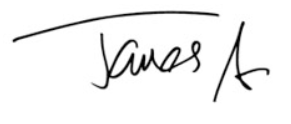- What’s happening in the uranium market?
- A scramble to source supplies
- Short-term catalysts could be on the horizon
When is a coup not actually a coup?
That is one of the questions I’ve pondered in recent weeks as I analysed the state of the uranium market for my day job as editor of Strategic Energy Alert.
Specifically, I’ve been curious to know what exactly has been happening in Niger, the landlocked West African country responsible for exporting about 5% of the global supply of uranium but as much as one-fifth of the fuel that supplies Europe’s atomic fleet.
Prices in the uranium spot market jolted upwards in the aftermath of a revolt on 26 July that saw a Nigerien junta, which calls itself the National Council for the Safeguarding of the Fatherland, seize power and detain the democratically elected president, Mohamed Bazoum.
Gen. Abdourahamane Tchiani, the erstwhile head of Niger’s presidential guard who led the revolt, threatened to kill Bazoum – who had been placed under house arrest – if foreign powers intervened.
From the outside looking in, this seemed like a slam-shut definition of a “coup”, passing the Duck test – “If it looks like a duck, swims like a duck, and quacks like a duck, then it probably is a duck” – with flying colours.
Indeed, the UK, France and the European Union immediately called it as such – though not the US, which repeatedly stopped short of using that word over the next few weeks.
In fact, it took until 10 October for the US State Department to announce that it had finally determined that the military takeover in Niger constituted a coup.
The reasons for the delay were unclear but what is known is that land-locked Niger has become a key ally for Western powers against Islamist insurgencies in the region, but military efforts have been undermined by coups in neighbouring Mali and Burkina Faso.
The Pentagon’s reluctance to call a coup a coup may have been aimed at preserving the ability to continue providing security assistance to military-ruled Niger.
(US coup legislation, specifically Section 7008 of the Consolidated Appropriations Act, specifies that any country whose “duly elected head of government is deposed by a military coup d’état or decree” will be automatically prohibited from receiving a broad package of congressionally appropriated foreign assistance.)
But the ramifications of the designation were immediate.
Most US assistance to the government of Niger, with the exception of humanitarian, food and health assistance, were immediately suspended pending action by Niger to return to “democratic governance”. Importantly, this included US development bank financing.
For one company looking to a US development bank to help finance its planned uranium mine this was undoubtedly very bad news indeed.
Having to wait until democratic elections were reinstated – a process that might take two to three years – would potentially kill any project stone dead.
So what happened next was very interesting indeed.
Just one month later, the US government seemed to have a change of heart again, ruling that US development banks could indeed now proceed with debt financing for the uranium project in question.
Be clear: this was an unusual move, one that was made without any public explanation.
From the outside, it certainly seems strange for the US government to belatedly denounce the events as a coup and suspend financing from US development banks, only to then permit – just one month later – the very same bank(s) to proceed with a uranium mine in Niger.
Why the US government did this is a matter of conjecture, though it’s certainly feasible that the US utilities that have already signed offtake agreements with the mine might have lobbied the US government to allow the development banks to proceed.
After all, utilities have been desperately scrambling to secure supplies for much of this year after over a decade of complacency due to the persistent commercial inventory overhang following Japan’s Fukushima nuclear disaster in 2011.
Whereas before it paid to wait to secure supplies, that dynamic is now quickly changing as fuel buyers feel insecure and under-covered for the first time in ages.
Indeed, utilities are now on track to sign contracts for more uranium in 2023 than in any year since 2012, according to analysts at Jefferies. That’s no surprise as utilities remain dramatically under-contracted post-2025.
In any case, what is certain is that the US now seems very keen to forge pragmatic relations with the new military government in Niger after recognising, as a fait accompli, the July coup in the West African nation.
On 3 December, the US ambassador to Niger then presented her letters of credence to the minister of foreign affairs, effectively giving the Niger junta government formal recognition at last by the US.
For the project in question, this was wholly good news and leaves it free to pursue debt financing from the US development banks as well as from the other parties it has been talking to over the last couple of months.
As my readers of Strategic Energy Alert now know, I think an announcement on project financing could happen quickly, especially as the company seemed on the cusp of arranging financing prior to the events in late July.
Why am I telling you this?
Well, it’s not just because I think the stock in question is primed to go on a belated tear.
It’s actually because I believe it highlights perfectly the scramble from utilities and governments to source supplies of uranium that has become a hallmark of the market in recent months.
Uranium is now trading at a 15-year high of more than $80 per pound (lb), rising from $48/lb at the start of the year.
Only a few days ago, a total of 22 countries, including the US, the UK, France, South Korea, Hungary and the Netherlands, signed a pledge at Dubai’s COP28 international gathering to triple nuclear energy capacity from 2020 by 2050.
“Nuclear energy is back,” said French President Emmanuel Macron. Tripling production capacities “sends a powerful message to the world” he said.
More than 100 nuclear power plants are already under construction or planned around the world, while old facilities are getting their lifespans extended.
In Europe, France has abandoned plans to reduce nuclear’s share of electricity generation to 50%. While at the end of November, the Swedish Parliament approved a bill allowing more nuclear reactors to be built than previously planned, scrapping the previous cap of ten.
Meanwhile, China’s energy regulator is expected to set the country’s nuclear capacity target at 120-150 GW by 2030, up from 38 GW in 2017.
Be clear: this is fanning demand for the uranium that is needed to power those plants.
Demand for uranium – the primary fuel used in nuclear power plants – is rising as countries look to solve the dilemmas of decarbonisation and energy security.
According to estimates, up to 112,300 tonnes of uranium will be required to feed the world’s nuclear reactors by 2040, up from 62,500 tonnes in 2021.
At the same time, supply growth is set to remain constrained and global mine production will not be able to keep pace with uranium demand.
As a result, we can expect to see a shortage of uranium by as early as 2035, according to Bank of America (BoA).
The bank’s forecast implies a production deficit of 60 million pounds of uranium in 2035, on par with Kazakhstan’s (15% of global reserves) annual output.
“After a decade of underinvestment, a shortage is visible; our strategists forecast 20-40% upside [in the price of uranium],” said BoA investment and ETF strategist Jared Woodard in a note earlier this year.
“Resource nationalism, energy security, war and inflation echo the nuclear build-out of the 1970s/80s.”
Of course, most uranium stocks have surged in recent months as prices for the commodity dubbed “yellowcake” have jumped to their highest level in 12 years, reaching heights not seen since Fukushima.
But although prices have shot higher, I think we are at the beginning of a structural bull market with some exciting short-term catalysts on the horizon.
These include potential sanctions on Russian uranium that could further limit supply and send prices higher. Russia has a dominant position in the uranium market, handling 43% of the global enrichment capacity.
Although much of Russia’s energy exports have been hit by Western sanctions since the country launched its full-scale invasion of Ukraine, uranium has remained a notable exception.
However, a bill banning Russian uranium imports to the US – the Prohibiting Russian Uranium Imports Act – is gaining momentum and teed up for a vote in the US House of Representatives this very week.
What’s more, similar discussions on a ban on Russia’s uranium supply have also taken place in the European Parliament as the EU mulls its sanctions package against Moscow.
Any ban on Russian uranium is currently not priced into the market, according to BoA’s Woodard.
If it needs spelling out, a fuse has been lit under prices amid a global renaissance in nuclear power – and the market for uranium is catching fire.
Until next time,

James Allen
Contributing Editor, Fortune & Freedom



